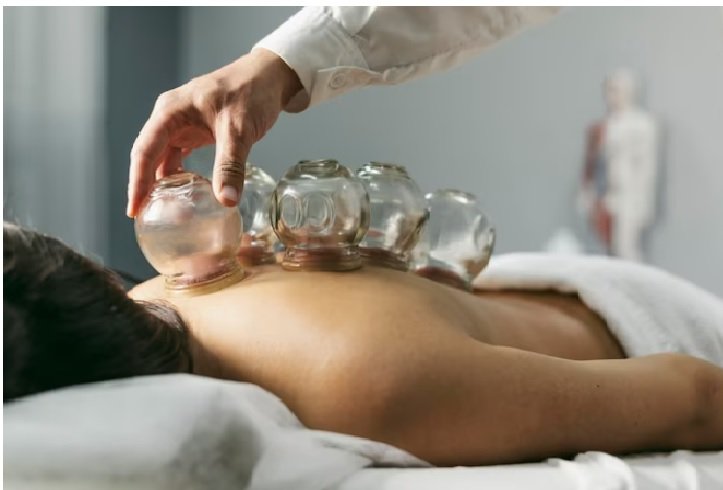Cupping therapy has gained significant attention in recent years for its potential to alleviate muscle pain and tension. Whether you’re considering cupping as part of your lower back pain physical therapy or seeking relief from general muscle discomfort, understanding the dos and don’ts of this ancient practice is essential. Ten crucial guidelines to ensure a safe and effective cupping for muscle pain experience.
The Do’s: How to Maximize the Benefits of Cupping
1. Do Seek a Professional
Seeking a licensed and experienced cupping therapist is essential for several reasons. These professionals have received specialized training in cupping techniques and can assess your unique needs. They can identify the best cupping method, duration, and intensity for your condition. Moreover, a professional therapist can monitor your progress and adjust the treatment plan as necessary to ensure optimal results.
2. Do Communicate Your Concerns
Effective communication with your cupping therapist is crucial for a personalized treatment plan. Share detailed information about your pain areas, the severity of discomfort, and any underlying medical conditions or medications you’re taking. This information lets your therapist customize the cupping experience to address your needs and ensure your safety.
3. Do Prioritize Hydration
Proper hydration is a vital aspect of cupping therapy. Cupping can stimulate the release of toxins and improve blood circulation, and being adequately hydrated aids in flushing out these toxins more efficiently. Drink water before and after your cupping session to help your body detoxify and recover effectively.
4. Do Follow Aftercare Instructions
These guidelines are designed to enhance the benefits of cupping and minimize any potential side effects. They may include recommendations such as avoiding hot baths immediately after cupping, applying a moisturizing cream to the treated areas, or refraining from strenuous exercise for a specified period. Following these instructions diligently ensures a smooth recovery process.
5. Combine Cupping with Other Therapies
While cupping can be a powerful tool for pain relief, it’s often most effective when integrated into a broader treatment plan. Consider combining cupping with other complementary therapies, such as physical therapy, stretching exercises, or massage. These combined approaches can synergistically address the root causes of muscle pain and provide comprehensive relief.
6. Do Be Patient
Patience is key when it comes to cupping therapy. The effects of cupping may not be immediately noticeable, and it may take multiple sessions to experience significant and lasting results. Understand that healing and pain relief are processes, and your body needs time to respond positively to the treatment.
7. Do Listen to Your Body
During and after your cupping session, pay close attention to your body’s signals. Cupping should be comfortable and pain-free. If you experience excessive discomfort, dizziness, or any unexpected reactions, inform your therapist immediately. Your therapist can adjust the treatment accordingly to ensure your comfort and safety.
8. Maintain a Healthy Lifestyle
Cupping therapy is most effective when complemented by a healthy lifestyle. Ensure that you’re consuming a well-balanced diet, engaging in regular physical activity, and getting adequate rest. A healthy lifestyle supports your body’s natural healing processes and helps you maintain the benefits of cupping over time.
9. Do Consider Cupping for Preventive Care
Massage vacuum cupping is not limited to pain relief; it can also be a preventive measure to maintain overall muscle health and well-being. By incorporating regular cupping sessions into your wellness routine, you can proactively prevent muscle tension and pain from occurring in the first place.
10. Do Explore Cupping Variations
Cupping therapy offers various techniques and approaches, including stationary cupping, moving cupping, and flash cupping. Discuss with your therapist which method best suits your needs and preferences. Exploring different cupping variations allows you to tailor the treatment to your specific condition and comfort level, optimizing its effectiveness.
The Don’ts: What to Avoid During and After Cupping
1. Don’t Attempt DIY Cupping Without Proper Knowledge
DIY cupping, while possible, carries risks if not done correctly. Avoid self-treatment without proper training and equipment. Incorrect application of cups can lead to injuries, bruises, or undesirable outcomes. It’s advisable to consult with a professional therapist for safe and effective cupping.
2. Don’t Cup Over Broken Skin or Open Wounds
Cupping should never be performed over broken skin, open wounds, or irritated areas. Doing so can increase the risk of infection and discomfort. Ensure your skin is intact and free from injuries or conditions before your cupping session.
3. Don’t Cup Over Bony Areas
Avoid placing cups directly over bony areas, such as the spine, joints, or prominent bones. Cupping over these areas can be uncomfortable and less effective. Instead, cups should be positioned over fleshy or muscle-rich areas for optimal results.
4. Don’t Overdo It
Excessive cupping or leaving cups in one place for too long can result in skin discoloration, bruising, or discomfort. Follow your therapist’s recommendations regarding the appropriate duration and intensity of cupping for your condition. A professional therapist will ensure that the treatment remains safe and painless.
5. Don’t Cup Over Organs
Cupping should never be performed over vital organs or sensitive areas. Ensure that cups are placed well away from the abdomen, heart, and other sensitive body regions. Proper cup placement is essential to prevent discomfort or injury.
6. Don’t Overlook Safety Precautions
Cupping therapy, when administered correctly, should be safe and painless. If you experience excessive pain, discomfort, dizziness, or any unexpected sensations during the session, inform your therapist immediately. They can assess the situation and make necessary adjustments to ensure your safety and well-being.
7. Don’t Expect Instant Relief
While some individuals may experience immediate relief after cupping, it’s important to note that results can vary. Don’t expect instant pain relief after a single session. Cupping is often most effective when performed regularly over a series of sessions. Be patient and allow your body the time it needs to respond positively to the treatment.
8. Don’t Skip Aftercare
Aftercare is a critical part of the cupping experience. Skipping aftercare instructions provided by your therapist can lead to unnecessary discomfort or complications. Proper aftercare, such as avoiding hot baths, applying moisturizing cream, and refraining from strenuous exercise for a specified period, ensures a smooth and effective recovery.
9. Don’t Replace Professional Medical Advice
Cupping therapy is a complementary approach to pain relief and well-being. It should not replace professional medical advice or treatment for underlying medical conditions. If you have an existing medical condition, consult with your healthcare provider for comprehensive care. Cupping can be integrated into your overall wellness plan, but it should not replace necessary medical treatment.
10. Don’t Neglect Maintenance Sessions
Even after experiencing relief, consider periodic maintenance cupping sessions to prevent muscle tension and pain from recurring. Ongoing cupping therapy can help you maintain the benefits of improved blood circulation, muscle relaxation, and overall well-being.
Conclusion
Cupping can be a valuable addition to your pain relief and wellness when administered correctly by a professional therapist. To explore the benefits of cupping and enhance your pain management strategies, consider visiting their trusted specialists. Their experienced professionals offer a holistic approach to pain relief, combining cupping therapy with physical therapy and other complementary treatments. Don’t let muscle pain hold you back – empower yourself with the healing benefits of cupping therapy and professional guidance. Even after experiencing relief, consider periodic maintenance cupping sessions to prevent muscle tension and pain from recurring.


















